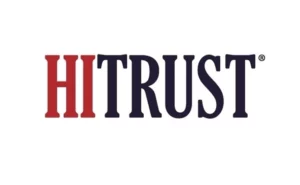
Decoding RBI’s Latest KYC Amendments: Implications for Financial Institutions
RBI’s latest amendments to its Know Your Customer (KYC) guidelines, announced on November 6, 2024, aim to enhance operational clarity and streamline compliance processes for financial institutions. These updates address key areas like customer due diligence (CDD), risk monitoring, and centralized data management, reflecting RBI’s commitment to strengthening the financial sector’s resilience.
The changes require financial institutions to adapt quickly, as the guidelines are already in force. Institutions must not only comply but also assess how these updates impact their operations and customer interactions.
Key Amendments in the KYC Guidelines
1. Customer Acceptance Policy
RBI now mandates that Customer Due Diligence (CDD) be conducted at the Unique Customer Identification Code (UCIC) level (Paragraph 10(f)). This simplifies processes for existing customers by allowing their records to be reused for additional services, eliminating the need for repeated verifications.
For example, a customer with an existing savings account can seamlessly open a fixed deposit or apply for a loan without going through a complete KYC process again. This change reduces friction in onboarding and enables institutions to improve service delivery while maintaining compliance.
2. Monitoring of High-Risk Accounts
An amendment to Paragraph 37 provides clarity on the requirement for intensified monitoring of high-risk accounts. The repositioning of the related explanation underscores the importance of proactive oversight for these accounts.
Institutions are expected to use advanced monitoring tools to detect unusual activity, such as frequent high-value transactions or changes in account behavior. This emphasis on vigilance is critical to mitigating risks related to fraud, money laundering, and terrorist financing.
3. Updation/Periodic Updation of KYC
Paragraph 38 now includes the term ‘updation’ alongside ‘periodic updation’, ensuring financial institutions maintain real-time accuracy of customer records. Rather than waiting for scheduled intervals to update KYC information, institutions are encouraged to incorporate continuous updates as customer profiles evolve.
This is particularly relevant for businesses dealing with dynamic customer bases or higher-risk categories, where timely updates can prevent lapses in compliance and reduce exposure to potential threats.
4. Sharing KYC Information with CKYCR
An amendment to Paragraph 56(h) strengthens the mandate for timely uploading and updating of KYC data to the Central KYC Records Registry (CKYCR). By keeping centralized records current, financial institutions contribute to an ecosystem where data is accessible across entities, reducing duplication and supporting better risk management.
This not only ensures compliance but also streamlines customer onboarding processes when individuals engage with multiple financial institutions.
Implications for Financial Institutions
1. Streamlined Customer Onboarding
By conducting CDD at the UCIC level, financial institutions can eliminate redundant processes for existing customers. This improvement reduces onboarding times, making customer interactions smoother and enhancing overall satisfaction.
2. Enhanced Risk Monitoring
The clarified guidance on monitoring high-risk accounts pushes institutions to adopt proactive measures. This could involve integrating real-time monitoring solutions or leveraging AI-driven analytics to identify suspicious patterns, ensuring better risk mitigation.
3. Improved Compliance Practices
Institutions are now better equipped to avoid compliance gaps with clear directives on KYC updation. By maintaining updated records, they can prevent regulatory penalties and respond effectively to audits or investigations.
4. Efficiency in Data Management
The strengthened requirement for CKYCR integration promotes data consistency and collaboration between institutions. This reduces operational redundancies and ensures customer records remain accurate and accessible.
Compliance Deadlines and Action Items
Immediate Enforcement
The amendments are already in effect, necessitating immediate action from financial institutions. Delays in implementation could attract regulatory scrutiny or penalties.
Actionable Steps
- Policy and Procedure Updates: Review and align internal KYC policies with the updated guidelines.
- Process Automation: Use technology to automate CDD processes and ensure timely KYC updation.
- Staff Training: Conduct workshops to familiarize teams with the changes and their implications for day-to-day operations.
- Technology Investments: Adopt advanced tools for real-time monitoring and data integration with CKYCR.
These measures will not only ensure compliance but also position institutions to handle future regulatory shifts more effectively.
Modernization to patch current risks
RBI’s amendments to its KYC guidelines reflect a significant step toward modernizing compliance practices while addressing current challenges in risk management. By emphasizing streamlined due diligence, proactive risk monitoring, and better data sharing, these changes aim to enhance the resilience of India’s financial ecosystem.
Looking ahead, these updates also signal a shift toward a more dynamic and technology-driven approach to compliance. Tools like artificial intelligence and real-time analytics will play an increasingly pivotal role in enabling institutions to stay ahead of regulatory demands. Financial institutions that invest in these solutions can benefit from enhanced operational efficiency and strengthened customer trust.
The implications of these changes extend beyond compliance—they offer an opportunity to innovate. As the financial sector evolves, institutions must embrace agility and continuous improvement to remain competitive while safeguarding the integrity of the system.
By treating these amendments as a blueprint for long-term adaptation rather than a short-term regulatory hurdle, institutions can build stronger foundations for both compliance and growth in an ever-changing landscape.
Latest
Blogs
Whitepapers
Monthly Threat Brief
Customer Success Stories
 USA
USA India
India APAC
APAC Middle East
Middle East Global
Global






 Facebook
Facebook Linkedin
Linkedin  X
X Youtube
Youtube








